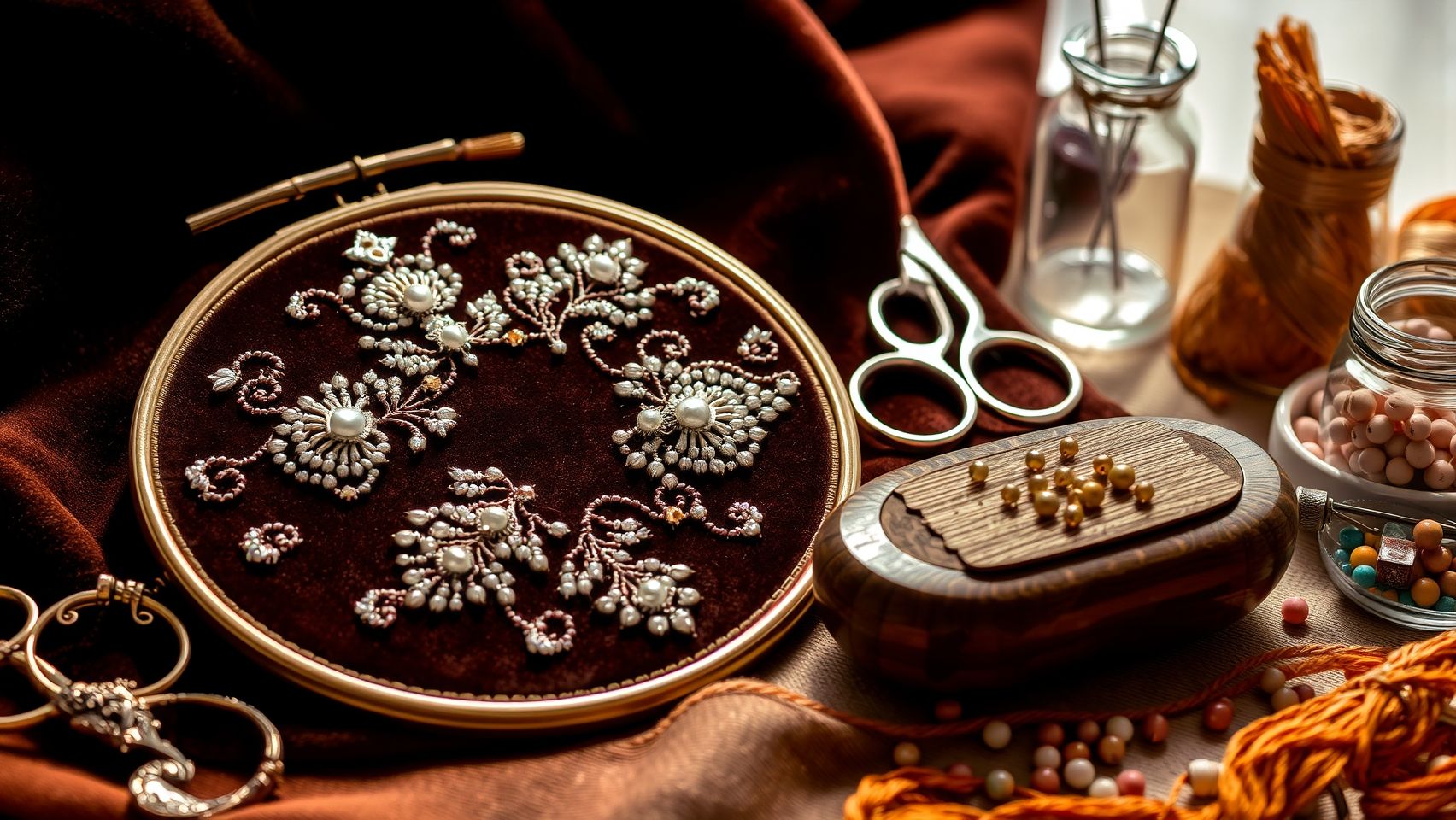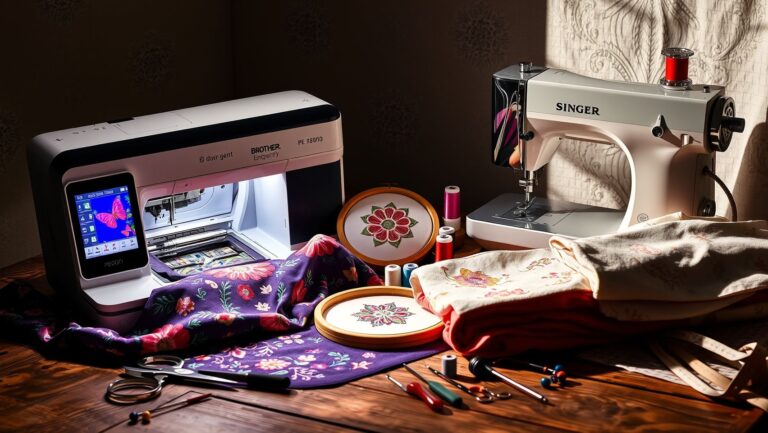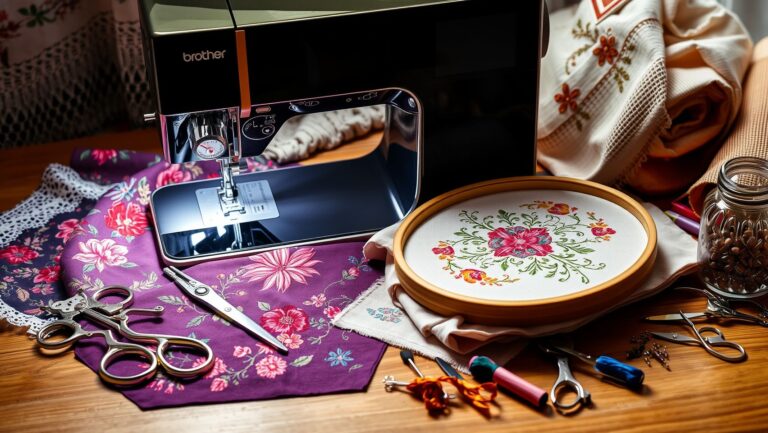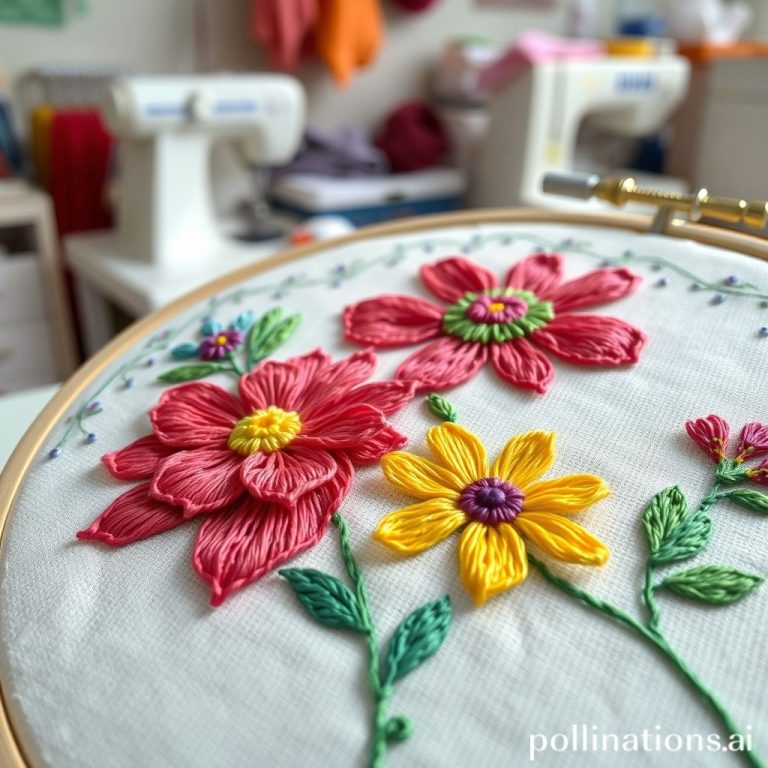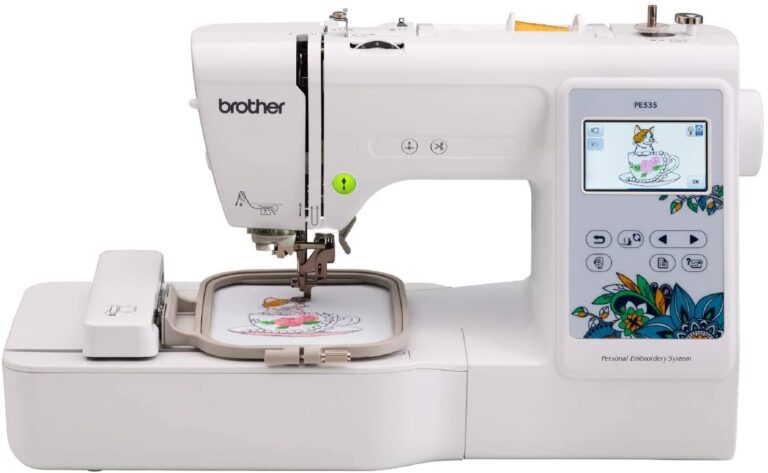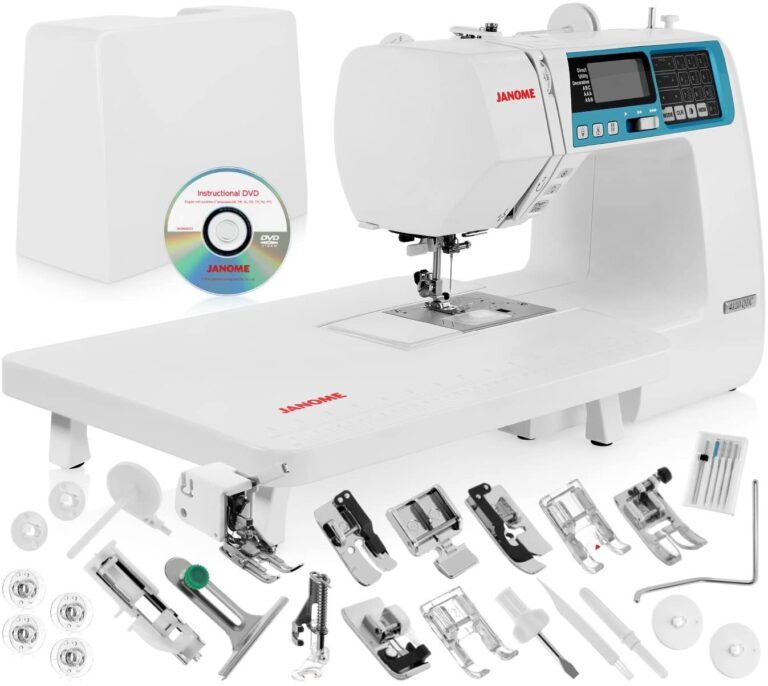How to Master Tambour Embroidery for Stunning Beaded Designs in Weeks
Imagine adding intricate beadwork to your garments with just a needle and a hook—transforming simple fabric into luxurious art. Tambour embroidery, a centuries-old technique with French couture roots, is experiencing a renaissance among DIY crafters. Its delicate, chain-stitch appeal makes it perfect for creating stunning beaded designs that elevate any project. Whether you’re just starting out or aiming to refine your skills, this article promises step-by-step guidance and essential tools, from specialized hooks to quality threads, to help you master this art in just a few weeks. We’ll cover everything from basic techniques to advanced embellishments, providing practical solutions suited for beginners and seasoned artisans alike. So why wait? Dive into the elegant world of tambour embroidery and start turning your fabric into extraordinary works of art today:
What is Tambour Embroidery and Why Is It So Popular?
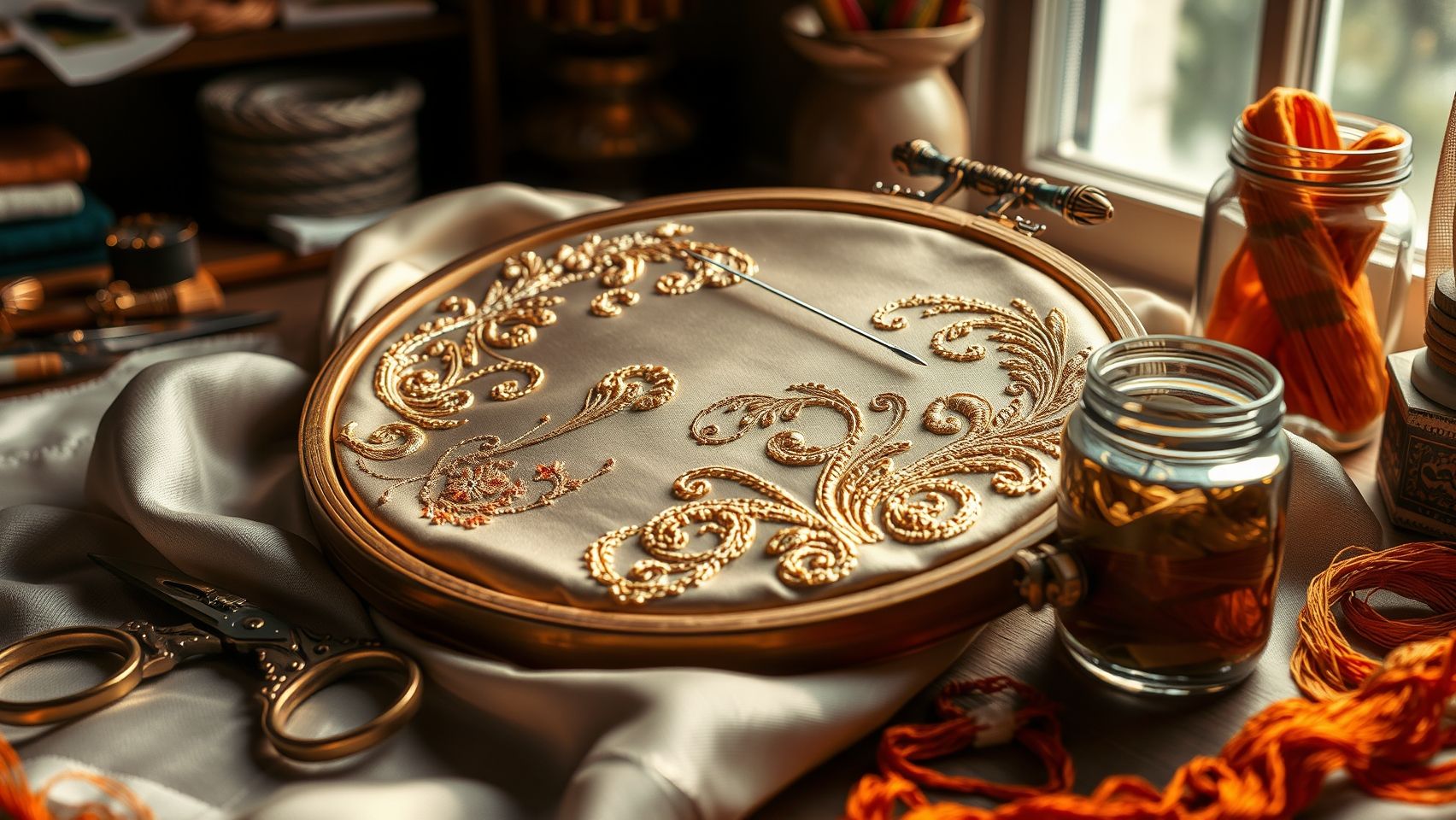
Tambour embroidery is a traditional yet sophisticated needle-and-hook technique renowned for its delicate beadwork and intricate embroidery. Originating from 18th-century France, this technique has long been a favorite in luxurious fashion, especially within haute couture houses like Chanel and Givenchy. Its reputation for creating seamless, continuous stitches makes it a highly sought-after method for detailed embellishments on haute couture garments, bridalwear, and artisan accessories.
Understanding the history and cultural significance of tambour embroidery can significantly enhance both your technique and design choices. By exploring its roots in French couture, hobbyists and professional embroiderers gain insight into the period’s craftsmanship standards, inspiring precision and elegance in their work. Moreover, recognizing its evolution from traditional ateliers to modern tutorials and social media demonstrations helps make this art form more accessible to contemporary crafters.
Origins and Cultural Significance
Tambour embroidery traces back to France in the 18th century, where it became a staple in the ateliers of prestigious fashion houses. Coco Chanel popularized its use, integrating it into her designs to elevate the luxury and finesse of her collections. The technique’s association with French couture has cemented its status as an artisan craft, symbolizing meticulous craftsmanship and timeless elegance. Today, this historical lineage continues to influence high-end fashion and inspires modern artisans to incorporate similar meticulous beadwork into their projects.
Why Is Tambour Embroidery So Popular Today?
In recent years, tambour embroidery has experienced a resurgence due to social media platforms like Instagram and YouTube, which showcase step-by-step tutorials, reels, and community projects. These digital resources have made mastering tambour more approachable for hobbyists, expanding its popularity beyond elite couture circles. Its appeal lies in the ability to create stunning, textured designs — from bridal embellishments to bespoke accessories — with accessible tools and practice.
By studying the roots of tambour embroidery and observing its ongoing popularity, you can better appreciate its aesthetic and technical qualities. This knowledge encourages careful design planning, precise execution, and creative innovation—hallmarks of celebrating this timeless craft.
Step-by-Step Guide to Setting Up and Doing Tambour Embroidery
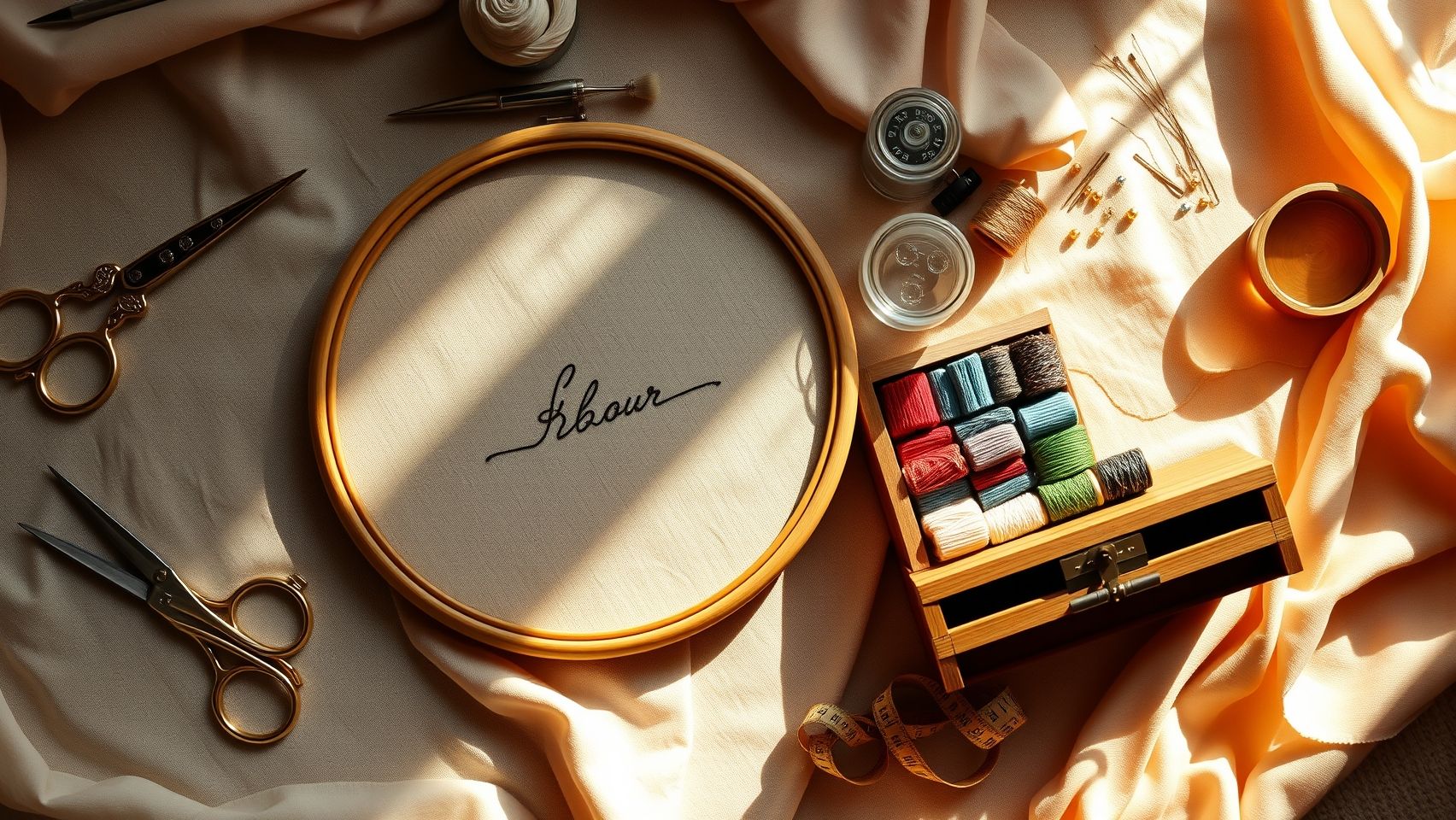
Tambour embroidery is a sophisticated needlework technique renowned for its delicate, chain-like stitches that create intricate beadwork and embellishments. Mastering this craft involves a precise setup process and understanding the essential tools required to execute beautiful designs efficiently. Whether you are a beginner or looking to elevate your skills, a systematic approach will make your tambour embroidery experience smoother and more rewarding.
Proper preparation, including selecting the right fabric, hoop, and tools, is crucial to achieving even, professional-looking stitches. This guide will walk you through each step, from fabric selection to executing basic tambour stitches while offering practical tips and troubleshooting advice to help you craft stunning beaded designs in just a few weeks.
Selecting the Right Fabric and Hoop
The foundation of successful tambour embroidery is choosing a stable, smooth fabric that can support fine stitches and beads. Typically, medium-weight fabrics such as silk, taffeta, or fine cotton are favored because they provide sufficient support without sagging. Using a hoop ensures the fabric remains taut, preventing puckering and enabling precise stitch work.
A 5-6 inch tambour embroidery hoop made of wood or sturdy plastic is recommended for most projects. This size offers optimal stability and ease of maneuvering around detailed patterns. To set up, stretch your fabric tightly within the hoop, ensuring it is smooth and secure before starting your embroidery. Tight tension is vital to prevent fabric movement during stitching, which could distort your design.
Choosing the Right Tools and Preparing Your Workspace
The primary tool for tambour embroidery is a fine tambour hook, with sizes ranging from 0.3 mm to 0.6 mm. The smaller the size, the finer the stitches—suitable for intricate beadwork or delicate details. For beadwork, selecting a hook size that comfortably picks up beads without crushing them is essential, typically around 0.4 mm. Keep a comparison chart handy if you’re unsure which size suits your project best.
Gather your beading thread, preferably lightweight and flexible thread such as polyester or nylon. Use a beading needle (size 11 or smaller) to thread your beads, threading small amounts at a time to avoid tangles. Prepare a small container of beads—seed beads in various sizes are popular for tambour embroidery—and slide just enough beads onto the thread for your immediate stitches.
Create a well-organized, well-lit workspace with a sturdy table. Good lighting is essential to see fine details clearly. Working on a steady surface allows for controlled, precise movements, reducing fatigue and errors. Optional tools like a magnifier can assist in detailed beadwork, especially for smaller beads or intricate patterns.
Executing Basic Tambour Stitches
Understanding the basic stitch is fundamental. Hold your tambour hook at a comfortable angle and practice the circular, continuous motion that creates each chain link. To begin:
- Insert your beading thread through the fabric’s back or edge, anchoring your thread securely.
- Hook the thread with your tambour hook, ensuring gentle but firm grip.
- Use the hook to pick up a bead, sliding it onto your thread.
- Pull the hook through the fabric while maintaining tension, forming a tight chain stitch.
- Repeat this movement, creating a uniform row of beads or stitches, keeping the tension consistent.
For a smooth, even stitch, watch your tension—too loose results in droopy stitches, while too tight can distort the fabric or damage beads. Practicing slow, deliberate movements helps build muscle memory and results in professional-looking bead chains.
To troubleshoot common issues:
- If beads are crushing or not sliding onto the thread easily, select a slightly larger hook size or check the bead hole size.
- For uneven stitches, adjust your tension and ensure fabric remains taut.
- If stitches are inconsistent, practicing the circular motion and maintaining a steady hand will improve uniformity over time.
Embedding a slow-motion reel demonstrating the hook motion can be highly beneficial for visual learners, showing the continuous, circular hand movement necessary for flawless tambour stitching.
Remember, patience and practice are key. With these foundational steps, you’ll soon be creating stunning beaded designs with precision and ease, turning your embroidery projects into works of art.
Tools and Equipment for Effective Tambour Embroidery
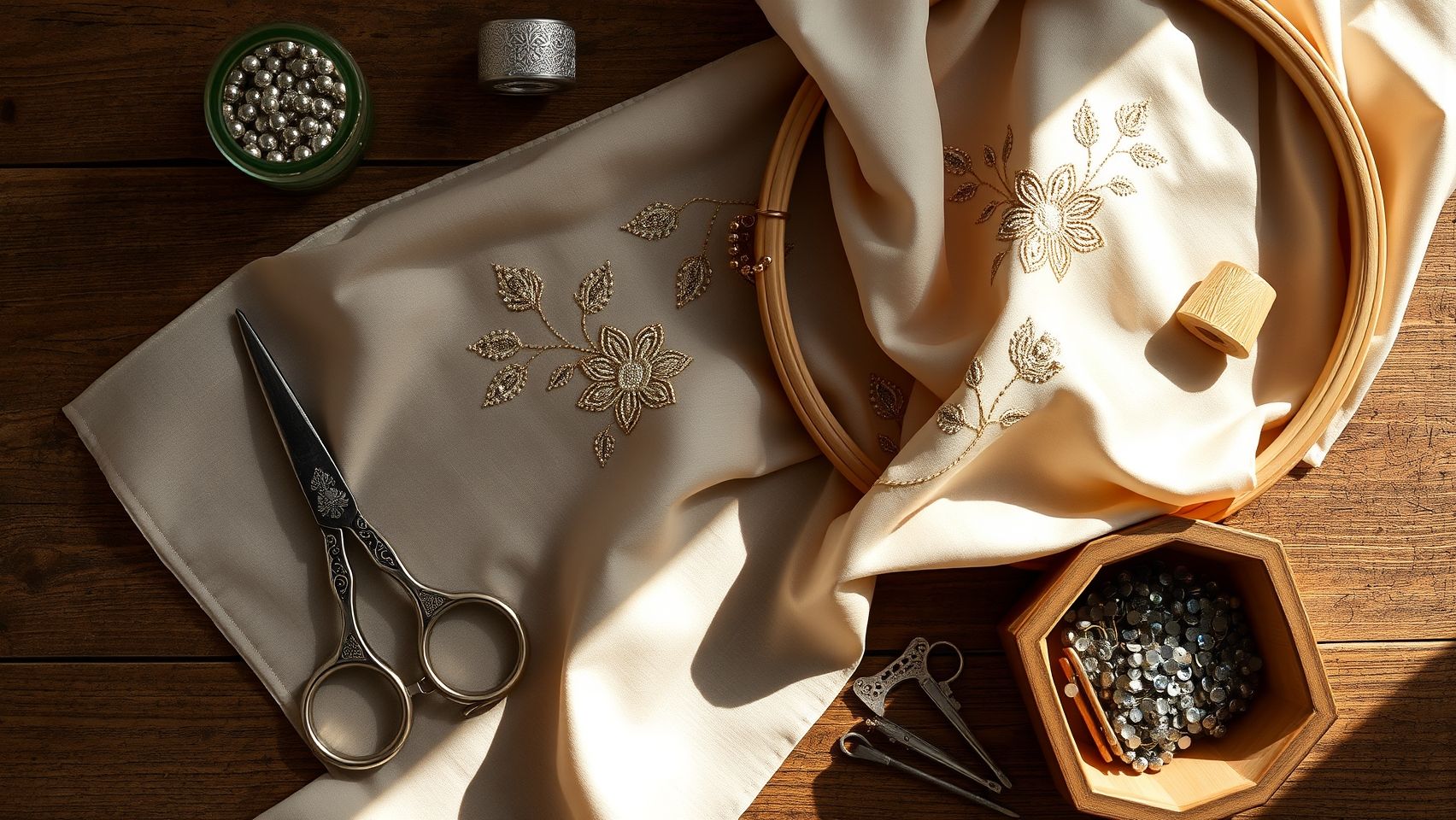
Mastering tambour embroidery requires selecting the right tools and equipment tailored to your skill level and project complexity. The quality and compatibility of your tools can significantly impact your precision, efficiency, and the overall finish of your beadwork. Understanding the differences among various hooks, hoops, threads, and safety practices is essential for achieving stunning results in a short time.
Essential Tools: Tambour Hooks and Comparison
At the core of tambour embroidery are the specialized hooks used to create intricate chain stitches and bead embellishments. The most common sizes are 0.3 mm, 0.4 mm, and 0.6 mm, each suited to different types of projects and bead sizes.
Smaller hooks like 0.3 mm excel in fine, detailed beadwork but can be more fragile, requiring careful handling. The 0.4 mm hooks offer a good balance of precision and strength for most projects. The 0.6 mm hooks are ideal for larger, more prominent bead designs and thicker threads, providing durability and ease of use.
When selecting hooks, consider the bead size and the project’s intricacy. Always handle these sharp tools with care, keeping them in dedicated cases to prevent injuries. Cleaning and inspecting hooks regularly prolongs their lifespan, and using magnifiers can help in maintaining precision, especially with fine hooks.
Compatible Hoops and Threads
Choosing the right hoop—wooden, plastic, or adjustable—can enhance your embroidery process by providing stability and ease of manipulation. Wooden hoops are sturdy and offer a traditional aesthetic, but plastic and adjustable hoops are lightweight and often easier to adjust for different project sizes and fabric tension.
Thread options include nylon monofilament, silk, and polyester, each with distinct characteristics. Nylon monofilament is exceptionally strong and transparent, making it suitable for beadwork that requires nearly invisible stitching. Silk offers a luxurious feel and flexibility for delicate embellishments, while polyester provides a good balance of strength, durability, and colorfastness.
Proper handling safety tips include always storing hooks in a secure case, keeping them out of reach of children, and using magnifiers if needed to prevent accidental pricks. Regular maintenance ensures your tools stay in optimal condition, contributing to cleaner stitches and reduced frustration during intricate work.
Optional tools like bead trays, needle forceps, appropriate lighting, and magnifiers can further facilitate efficient embroidery, especially for detailed bead placement and long hours of work. Investing in quality equipment aligned with your project scope ensures consistency and professional results in your tambour embroidery endeavors.
Creating Stunning Beaded Embellishments with Tambour

Tambour embroidery is a captivating technique that allows artisans to incorporate beads into fabric with remarkable precision and elegance. This method not only elevates the visual appeal of your projects but also unlocks a new realm of textures and patterns, making it ideal for creating intricate, beaded embellishments on garments, accessories, or art pieces. Mastering tambour beading can transform simple fabrics into luxurious designs, and with practice, you can achieve professional-quality results in just a few weeks.
To start, it’s essential to plan your design thoroughly. Whether you’re envisioning a delicate floral pattern or bold geometric motifs, your success depends on thoughtful preparation and understanding of the beading process. This section will guide you through designing with beads, choosing the right supplies, and executing consistent stitches to produce stunning, textured effects. Experimentation is encouraged—each project is an opportunity to refine your technique and develop your artistic style.
Design Planning for Beaded Tambour Embellishments
Before beginning to stitch, sketch your pattern on paper or transfer it directly onto fabric using water-soluble markers or tracing paper. Clear outlines help you visualize placement and scale, ensuring uniformity across your design. Many experienced embroiderers recommend creating a detailed template to follow, especially when working with complex motifs or multiple bead colors. This proactive step minimizes mistakes and keeps your workflow smooth.
For intricate patterns, consider segmenting your design into sections. This approach allows you to focus on one area at a time, keeping tension even and stitch lengths consistent. Remember, precision in initial planning translates into a more polished final product, with evenly spaced beads and harmonious textures.
Selecting Beads and Color Coordination
Choosing the right beads is critical for achieving the desired pattern and texture. Seed beads in sizes 8-11 are most commonly used for tambour embroidery, offering a balance between delicacy and durability. Size 11 beads are ideal for finer details, while size 8 beads can be used to add bulk and texture. When selecting beads, consider the overall color scheme and contrast; coordinating bead colors with your fabric enhances visual interest and depth.
Pro tip: Use a color wheel to find complementary or analogous colors that harmonize with your fabric background. Incorporate metallic beads or shimmering finishes to add luminescence and richness to your design, creating a dynamic play of light and shadow.
Executing Beaded Embellishments with Consistency
Starting from the center or edges is a strategic choice—beginning at the middle allows you to work outward, maintaining even tension as your design expands. Use a tambour hook with a small, rounded tip for precise manipulation of beads and thread. Keep your stitches small and even, and maintain a consistent tension by gently yet firmly pulling the thread through each bead.
When stitching, use a circular motion with the hook to catch beads securely and create uniform, close-set rows. Practicing this motion in a steady, relaxed manner will improve your control and stitch quality. Additionally, incorporating a reel of a detailed beading project, demonstrating hook motion, bead placement, and finishing techniques, helps visual learners grasp the nuances of tambour embroidery.
For a professional finish, periodically check your tension and stitch length. Using a magnifying glass or high-quality lighting can aid in ensuring every bead aligns perfectly, especially when working on fine details or beadwork for wearable items.
Tips for Maintaining Uniform Stitching and Troubleshooting
Achieving a polished look demands consistency. Use your thumb to control tension by gently pulling the thread after each stitch, avoiding slack or overly tight stitches. Keep your stitch length uniform—roughly the size of two beads—so the beads sit evenly along the fabric.
Common issues include uneven tension, bead slippage, or missed stitches. If beads are slipping or not sitting right, adjust your tension or secure your stitches more firmly. For skipped stitches, verify your hook motion and ensure the thread catches each bead securely. Practicing in front of a mirror or recording your technique can reveal tension inconsistencies or awkward hand movements that, once corrected, will significantly improve your results.
Remember, patience and consistent practice are vital. Incorporate a reel of a detailed beading project to observe hand movements, bead placement, and finishing techniques to refine your skills further and bring your beaded designs to life with confidence.
Cost, Time, and Practical Tips for Tambour Embroidery Success
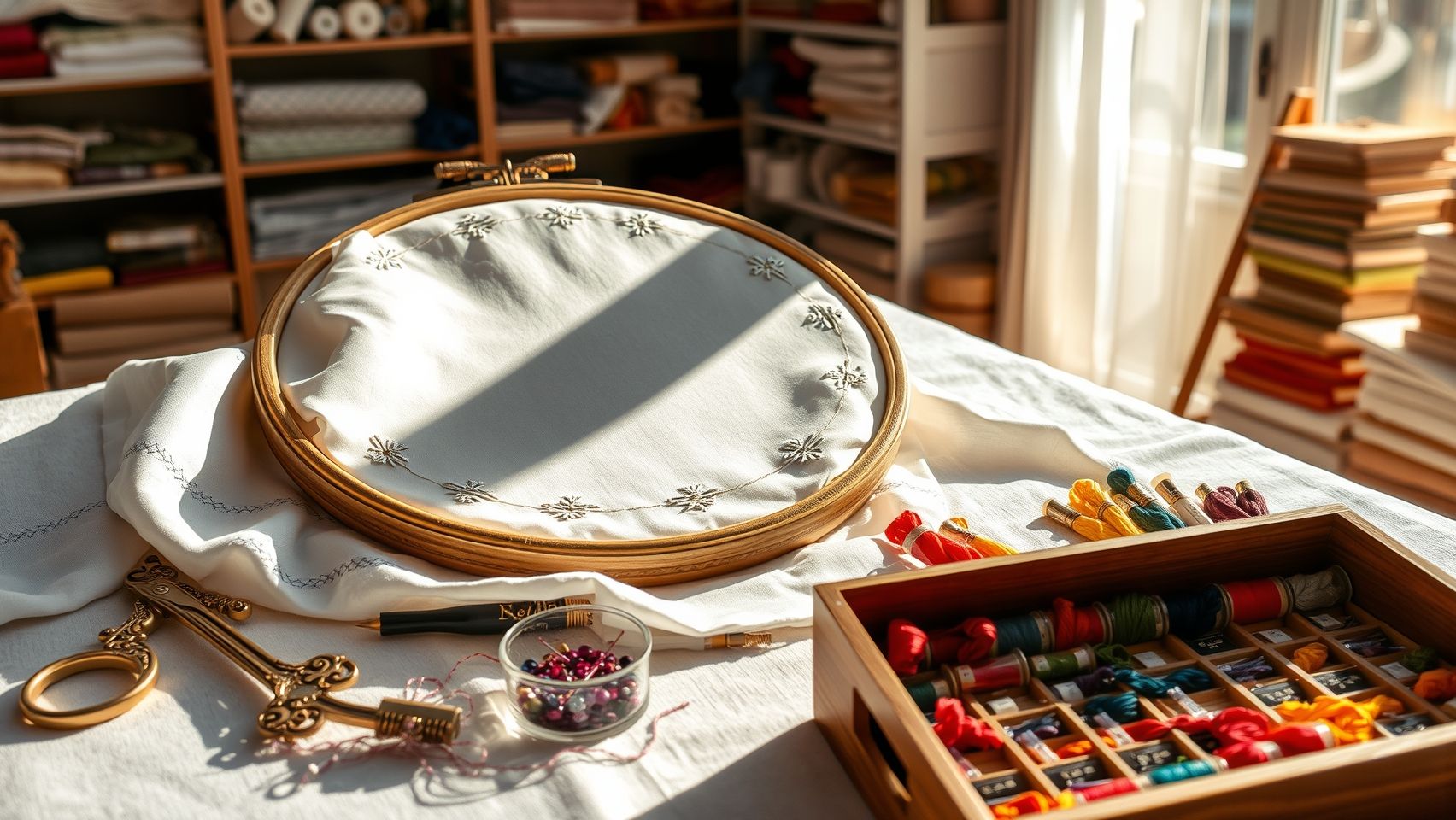
Embarking on tambour embroidery can be an exciting and rewarding craft, but understanding the practical aspects of cost and time investment is essential for beginners and experienced crafters alike. With a handful of basic supplies and some strategic planning, you can create stunning beaded designs within realistic timeframes and budget constraints.
Estimated Cost
For those starting out, assembling a basic tambour embroidery kit typically costs around $40. This includes essential supplies such as a tambour hook (~$15), travel or embroidery hoops (~$12), embroidery threads (~$5), and assorted beads (~$10). Investing in quality tools, like a sturdy tambour handle and a set of good needles, ensures smoother work and better results over time. Sourcing high-quality beads and threads can slightly increase costs but offers superior finish and durability. Many online suppliers and craft stores now offer starter kits, making it easier and more affordable to begin your tambour journey.
Time Estimates for Projects
Project complexity greatly influences the time required. Simple motifs or small samples, ideal for mastering hook movements and stitch control, usually take around 2-4 hours. As skills develop, larger and more intricate designs—such as beaded borders or floral motifs—may require 8-12 hours or more. Advanced projects that incorporate extensive beading, complex patterns, or embroidery with sequins can extend beyond 10 hours. The key to efficiency is consistent practice; starting with small samples helps build muscle memory and reduces overall time spent on larger projects.
Practical Tips for Efficiency and Safety
To speed up your tambour embroidery workflow, organize your tools methodically—use small containers for beads and threads, and keep your hook handle easily accessible. Batch beading across multiple projects simultaneously, which minimizes setup time and improves speed. Ensure your workspace is ergonomically arranged to prevent fatigue, especially during longer sessions. For safety, always handle sharp hooks with care, work in well-lit areas, and store tools in protective cases when not in use. Following safety protocols discourages injuries and prolongs the lifespan of your tools.
Additional resources, such as digital tutorials on platforms like YouTube or Instagram reels, are invaluable for accelerating learning curves. Visual guidance helps troubleshoot common issues, refine technique, and explore new design ideas quickly. With patience and proper organization, mastering tambour embroidery’s speed and safety aspects is entirely achievable within weeks, leading to impressive, professional-looking beadwork that elevates any fabric or accessory.
Conclusion
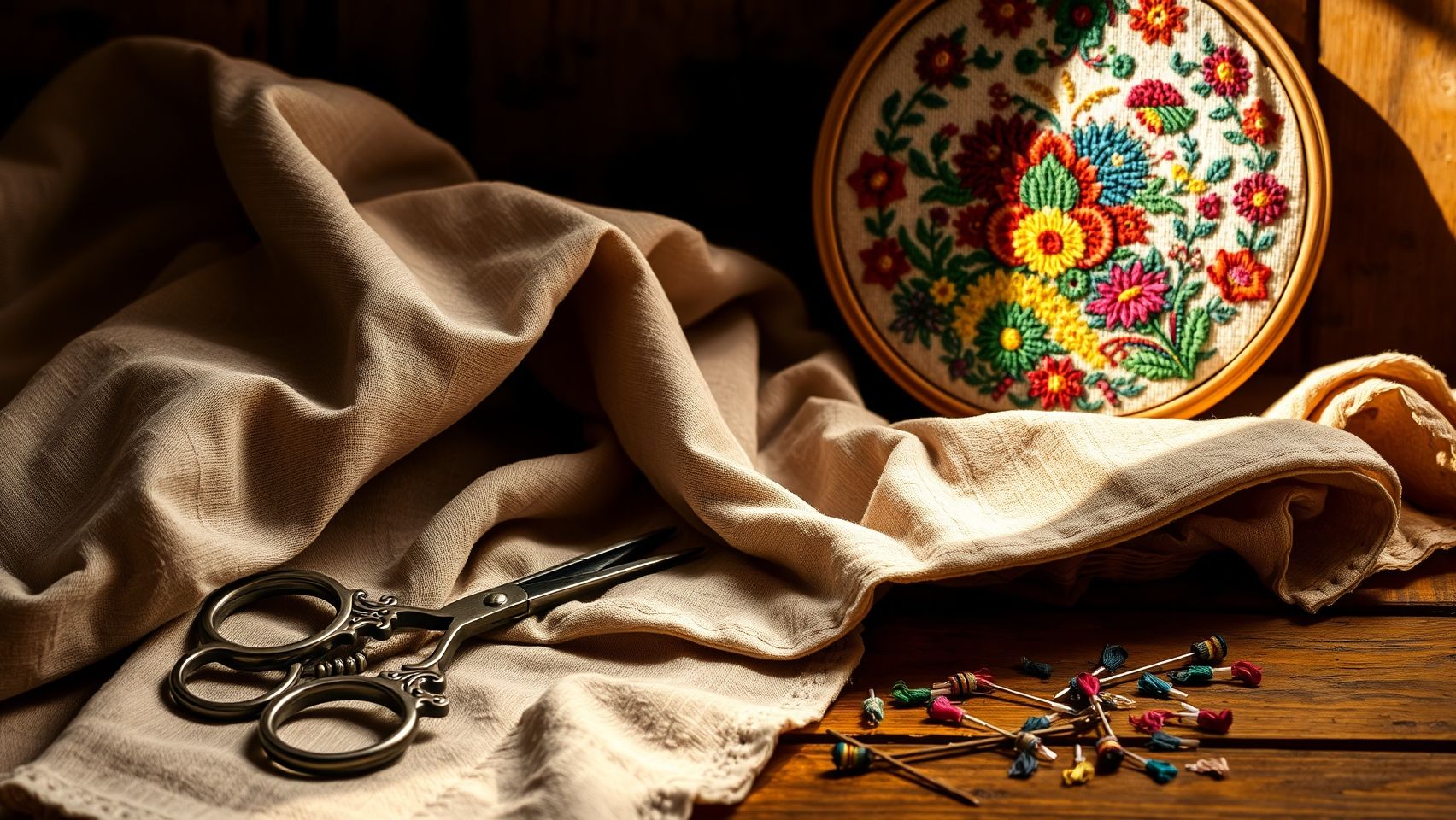
Mastering tambour embroidery seamlessly blends historical elegance with contemporary craft techniques, empowering you to create luxurious beaded designs with both precision and confidence. Throughout this journey, we’ve emphasized the importance of choosing the right tools, following clear step-by-step processes, and practicing regularly—key factors that transform simple fabrics into stunning works of art.
Recent trends in embroidery for 2024 highlight an exciting surge of creativity driven by innovations such as detailed beadwork and modern designs. Staying updated with these developments ensures your projects remain fresh and inspired, elevating your craftsmanship to new heights.
Now is the perfect moment to embrace this beautiful art form. Start your first tambour project today using our recommended tools and tutorials. Don’t forget to share your progress on social media—join the vibrant embroidery community and be inspired by others’ work. Enjoy the creative process, and watch your skills flourish into stunning masterpieces that reflect your unique style!
Remember, every stitch brings you closer to mastery. Your embroidery adventure begins now—happy stitching!
